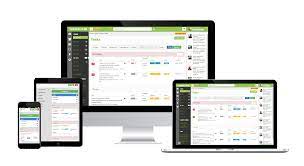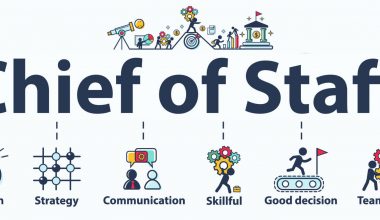We can think of management as tools we may quickly move deals with that support the application of thoughts and ideas at all stages of conception and realization to assist organizational processes.
Stay with me and get exposed to all you need to know about management tools
What are Management Tools?
The term “Management Tools” refers to all software programs and programming (with all alterations, upgrades, replacements, improvements, documentation, documents, and media connected thereto) that the supplier employs to provide and oversee the Services.
Many management tools have varied functions to meet various team sizes and working methods.
Utilizing management tools allows you to manage your team, track projects, perform jobs more quickly, and prepare for upcoming tasks.
What Is the Importance of Management Tools?
With the aid of a management tool, you can quickly establish a hierarchy of tasks for successful and speedy completion.
You may also use it to show which tasks depend on one another and which activities are performed in a particular order. Thus, the team’s ability to complete its mission is facilitated.
Types of Management Tools
#1. Cloud Management Tools
Today, a fantastic selection of personal digital assistants (PDAs) and computer-based time management solutions exist.
There are also digital time management tools that you can access or download to your personal computer to assist organize every aspect of your life, regardless of what you do or work in.
A priceless time management skill is being able to manage your time well.
There is an easy way to plan your time and schedule up to two years in advance. Here are some time management tools to choose from.
1. Todoist
You may easily organize your tasks with the help of Todoist, a specialized task management application or app. Its adaptability enables it to manage various projects’ associated duties.
This program will benefit you in your role as manager in terms of arranging tasks and assigning them to team members.
Todoist provides a safe, convenient location for all of your work-related chores. To keep track of what has been completed and is still outstanding, you also receive a comprehensive overview of all the tasks associated with a project.
Features
- With the Quick add option, create new tasks in a flash.
- Comment on assignments and projects
- Utilize colored graphs to visualize the productivity
- Receive instant alerts whenever someone posts a remark or completes a task.
Pricing: Each user pays $5 per month for the business plan.
Platforms Supported: Web, Windows, Mac, Linux, Android, and iOS
2. Tryshit for Email management
Have you become weary of signing in and out and hopping between accounts? As an aggregator, consider Shift.
A simple, one-stop app for all your work-related needs is provided by Shift, with all of your email accounts, applications, and workplaces consolidated into a single location.
To better manage things, it is a reasonable and elegant option. Increase productivity by integrating Shift with your email accounts, applications (1500+), and other resources.
Features:
- The simplest method to find anything across your mail, calendar, or Drive accounts is to use a unified search.
- Google Apps adds every one of your Google accounts, including Gmail, Calendar, Drive, Slides, Sheets, Adwords, and all the others.
- Workspaces for you or your team, create and share mission-critical Workspaces complete with tabs, bookmarks, and apps.
3. Google Drive for cloud storage services
A cloud storage solution is needed for easy management and access to your project files and documents. Managers now prefer Google Drive as their storage and file-sharing solution.
A cloud storage service allows you to access your uploaded files using any device and from virtually anywhere.
You can upload and view files on Google Drive, including PDFs, movies, audio files, and other files.
Features:
- Making folders will help you arrange the uploaded files.
- Recent files can be accessed quickly
- Directly with your team by sharing folders and files.
- Access the shared items to view, edit, or leave comments.
- Permit users to see, modify or leave comments on the shared items
How Much Does It Cost to Use Google Drive?: A 30 GB Google Drive storage space G Suite Basic plan costs $6 per monthly user.
Web, Windows, Mac, Android, and iOS are supported platforms.
4. Salesmate used as a Sales CRM software
You may streamline your sales process with the aid of Salesmate, a sophisticated CRM (customer relationship management) program.
It uses contemporary sales approaches to grow your company’s prospect pool, close more sales, and improve customer happiness.
An easy-to-understand sales funnel, this CRM program provides a view.
The status of each of your deals may be readily tracked, filtered, and shown.
Deals may be easily moved from one level to other thanks to the drag-and-drop interface.
Features:
- You may follow your team’s actions using a sales activity tracker.
- Receive alerts each time a potential customer opens your email.
- Making calls and sending texts to contacts is possible via the integrated virtual phone system.
Pricing: The monthly cost of the Growth plan is $24 per user.
Web, Android, and iOS platforms are all supported.
#5. Zoom for audio and video conferencing
Currently, Zoom may be the most widely used platform for video conferencing. Switch to Zoom to connect easily with your team during audio and video conference calls.
Additionally, working together and coordinating efficiently to accomplish team goals is simple. Zoom features a chat interface that lets you communicate with your team members and even share files with them in addition to video conferencing.
Using this app, you can start video conferences with your coworkers without needing to be tech-savvy.
Features
- lets your team present by supporting screen sharing.
- Call in HD with both voice and video.
- The admin dashboard provides essential data, such as real-time meeting data on the Web and android.
Pricing: The business plan cost each month is $19.99 per user.
It supports Web and Android platforms.
#2. Project Management Tools
1. Asana
Among the best project management software out there is ASANA. They make dashboards and chats easier to use.
We can share messages with the entire team using the TEAM PAGES function.
An intelligent box feature is also available, only displaying notifications relevant to a specific team member.
ASANA can interface easily with various other data sources, including Dropbox, GitHub, and Google Drive.
2. Basecamp
Project management software called Basecamp is very well-liked. There are numerous collaborative tools available.
- Users can post their thoughts in a separate discussion-only section, and we can distribute updates via email.
- Add deadlines for each work; however, it is not available with this program.
3. JIRA
JIRA is the most popular project management tool used by numerous businesses that adhere to the Agile SDLC philosophy.
The teams can use real-time reporting tools and design custom Kanban and scrum boards. Bugs are simple to trace down and fix.
4. PM Teamwork
All of the necessary project tracking features that a user could desire is included in Teamwork Project Management.
It is intuitive and relatively simple to use. We can add many things: milestones, task management, chat boxes, file storage, and visualizations like a Gantt Chart.
With the addition of DropBox, Google Drive, etc., database management is also possible.
1. BuzzSumo
With the application BuzzSumo, you can discover the most famous content and influential people.
It can be used to determine which material works best for any subject, and all you have to do to get started is type in a keyword or website.
2. Google Trends
Google developed Google Trends as a free tool to assist users in finding hot topics online.
Additionally, you may check keywords on Google Trends to see if they are trending and how their current volume stacks up against earlier months and years.
After that, you may utilize this data to inform your content marketing and social media marketing plan.
3. Canva
The ability to produce stunning photographs without the help of a designer is frequently required of social media managers and marketers. It is a crucial component of a successful social media strategy.
Many marketers use Canva as their go-to tool for instantly creating beautiful social media photos.
Without having to perform much actual design work, you may use pre-made themes, icons, and illustrations to give your photographs a professional appearance.
#4. Knowledge Management Tools
We use knowledge management tools to collect and disseminate internal and external knowledge effectively for your company.
Although they can be purchased separately, they offer the majority of knowledge management tools as features of knowledge management software.
Firms need to have the proper processes, procedures, or systems in place to produce, manage, store, and communicate organizational knowledge and put that information to good use in line with their business strategy.
Knowledge management tools can help with this.
Types of knowledge management tools include:
- Happeo is best for document management, internal communications, and knowledge bases.
- Document 360 is the best for the knowledge base and management of documents.
- SharePoint is the best for large teams, knowledge base, and management of documents.
- Helpjuice is the best for document management.
- ProfProfs are the best for managing learning.
How Do You Effectively Utilize Management Tools
#1. Make a master list and use a timer.
A time planner with all the features you require for life planning and organization is the first time management tool you require.
You may schedule your time for the year, the month, the week, and each day with the best time planners, whether loose-leaf binders or digital versions.
#2. Use a Work From List
Every successful CEO uses a daily master list. It is one of the best strategies to help you reach your SMART objectives and is the most effective productivity tool discovered.
You start by outlining every task you want to do during the course of the day when you make your daily list.
According to the guideline, employing a list on the first day will result in a 25% boost in efficiency.
Making a list of everything you need to complete before you start work can allow you to add two hours to your eight-hour day of productive time.
#3. Prioritize your tasks
The next stage is to arrange this list in terms of importance once you have a master list of the things you will be doing each day.
To identify the things that are urgent and vital, think about employing a time management matrix.
After you’ve ordered your master list, it will serve as a map to help you get from morning to night as quickly and effectively as possible.
Using your list as a daily schedule will become second nature to you in no time.
Management Tools FAQs
What does this management tool serve?
With the aid of a project management application, you can easily create a hierarchy of assignments for timely and successful completion.
What are business management tools?
The systems, software, controls, mathematic solutions, techniques, etc., that businesses employ to adapt to changing markets, maintain a competitive edge, and enhance business performance are collectively referred to as business management tools.
Conclusion
Management tools improve overall control over all business operations and increase employee productivity.
- 2 Quick Ways to Update Your Old PDF Files
- FILING SYSTEMS FOR BUSINESS: How to File Documents Properly (Detailed Guide)
- WHAT ARE DIGITAL ASSETS? How To Create Digital Assets
- FILE MANAGEMENT SYSTEMS: Definition, Types, and Examples
- DIGITAL ASSETS: Definition & How to Manage Them Effectively






